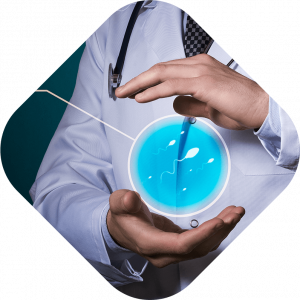What is Embryo Donation?
In the womb, the embryo forms as the fetal egg fertilizes with the sperm. The process of embryo donation involves fertilizing the donated eggs with the donated sperm and injecting it into the woman who will become the mother. Also, this process can take place when surrogate mothers donate embryos.
Clearing the Preliminary Tests for Embryo Donations
The woman who will receive the embryo donation will complete a series of tests, in order to see if her body is suitable to carry a baby. These tests will ensure against any potential health risks that could affect her health during the procedure. These may include:
- Physical examination for a history and background check
- Ultrasound to examine for any cysts or formations in the abdomen
- Viewing the endometrium to assess the uterus’s condition
Inspecting Embryo Donors 
The donors who will provide the egg and sperm for the embryo donation procedure will also be examined by medical staff through a series of tests. This may include preparing the egg and sperm donors by coordinating the blood groups with that of the recipient family. In the case where the blood groups are not a suitable match, it must be noted that forcing the procedure forward can result in numerous issues in both the mother and baby. Therefore, the donor has to pass multiple tests in order for the procedure to move forward.
Surgical Tests
The first and foremost in the list of preparations are the surgical tests that examine the donor for any fatal diseases that could harm the prospective mother and baby. These tests include HbsAg, HIV Duo, Anti HIV, and VDRL tests.
Hematological Tests
The next, most important test is the complete blood count of the donor, as it has a significant role to play in the egg collection procedure. It involves the Coagulation tests, aPTT, and PT, INR tests.

Donor Characteristics for Embryo Donation
To give birth to a healthy baby who looks just as perfect on the outside as they are on the inside is something that every parent desires. Hence, there may be certain features that are preferred over others for each family and individual. As a potential parent, there may be certain features you wish for your baby to possess as well. Our patients may consider the following aspects in their donors:
- Height
- Eye Color
- Skin Color
- Education Level
Embryo Donation and Gender Determination
Modern technology has developed Gender Determination to allow parents to prepare better for the children of the future. Parents can now be fully prepared to welcome their precious baby, before their little one make their entrance into the world. You can now be confident about your choice to go with pink or blue using our gender determination service. After successfully receiving an embryo donation, prospective mothers can opt for this as well. Additionally, apart from gender determination, gender selection is also possible, which allows parents to choose the gender of their baby.
How Does Gender Determination Work? How Does Gender Selection Work?
In Dr. HIT’s clinic, finding out a baby’s gender even before they are born is possible! Gender Determination only takes a few steps, and includes two methods in order to accurately identify the child’s gender. Firstly, an ultrasound helps us determine two of the most important factors:
- Measuring the Endometrial Thickness
- Evaluating the Spawning Capacity
Secondly, patients may opt for Gender Selection through more methods that come under the HSG method which targets the medicated uterine film.
- Evaluation of tubes
- Intrauterine control
- Determination of drug usage
Gender Determination Blood Tests
In every step of the embryo donation treatment, the patient needs to have a complete analysis of the blood composition and circulation in the body. For gender determination as well, several blood tests will be conducted, including:
- Blood count
- Tests exhibiting bleeding and coagulation
- Thyroid test
- Tests for infectious diseases
Examining Males for Gender Determination
Looking for the gender of the embryo by examining the father is much easier than doing so with the mother. All we need to do is count the sperms and evaluate them. If the sperm is found to be problematic, it is further examined with sperm retrieval and genetic tests. The procedure begins with the egg collection day and has certain guidelines attached with it:
- The mandatory blood tests need to be conducted
- You cannot eat or drink anything for 5-6 hours before receiving anesthesia
- The medication needs to be altered before the procedure
- The genetic and hematological tests must be observed
Gender Determination Processes
The first step that begins the gender determination process is interviewing the mother with our medical staff, which is then followed by several other treatments that will reveal whether they will have a baby girl or a baby boy.
Drug Treatment Process
During this process, we stimulate the ovaries with the use of medication, so that the female’s eggs develop and start working right away. Using needles, we inject the expecting mother with the prescribed medication under their abdomen’s skin. The ultrasound that follows in the coming days then displays the result, which reveals the baby’s gender.
Egg Collection and Microinjection (ICSI)
When injecting the HCG to the recipient, the egg collection begins under the effect of anesthesia. On the exact same day, we fertilize the eggs with the father-to-be’s sperm. In the laboratory, we view the eggs under a microscope while the fluids soak the egg. We then collect the eggs, store them in a lab for around an hour and half, and then peel them off using an enzyme or mechanical blows.

